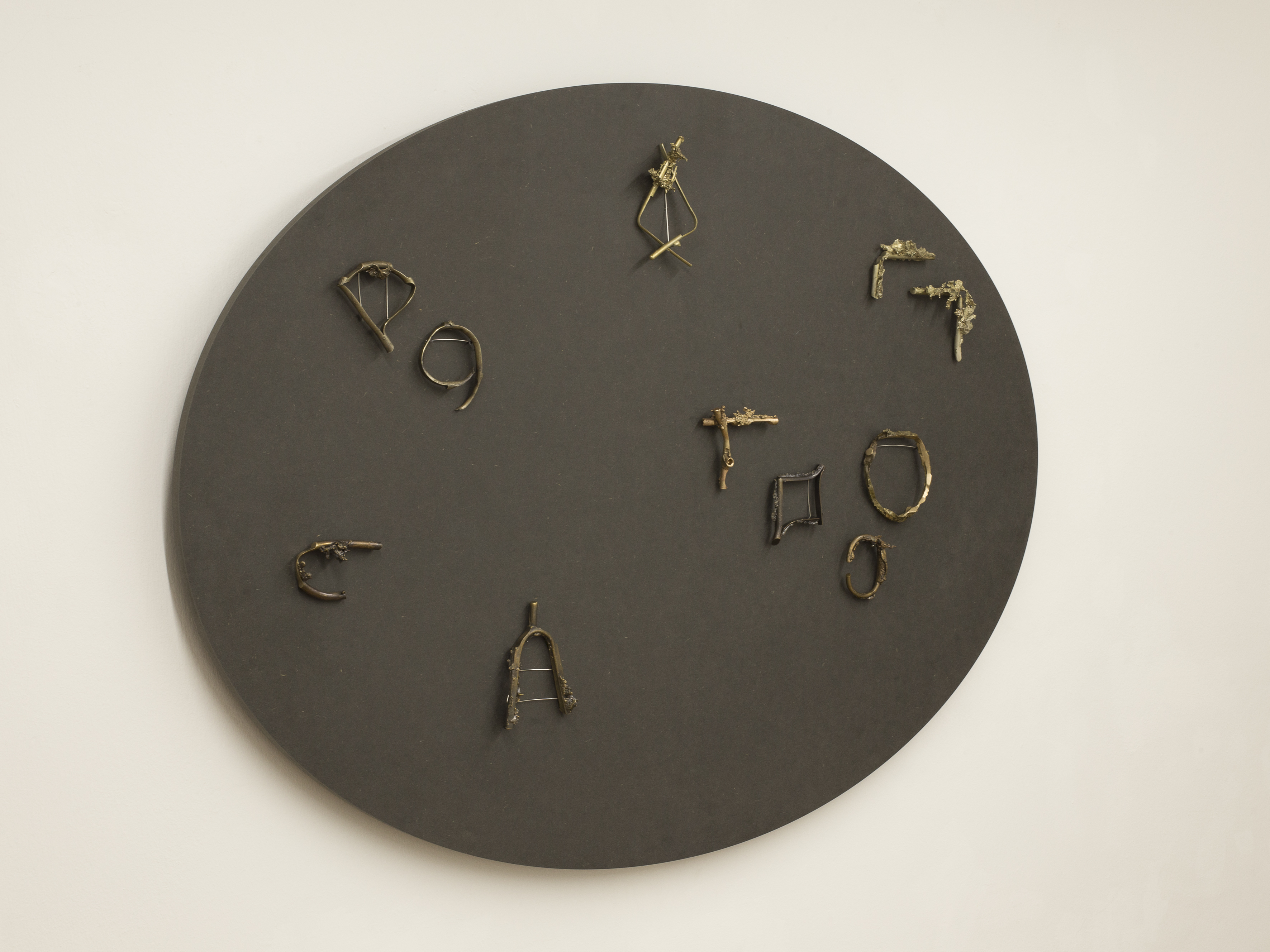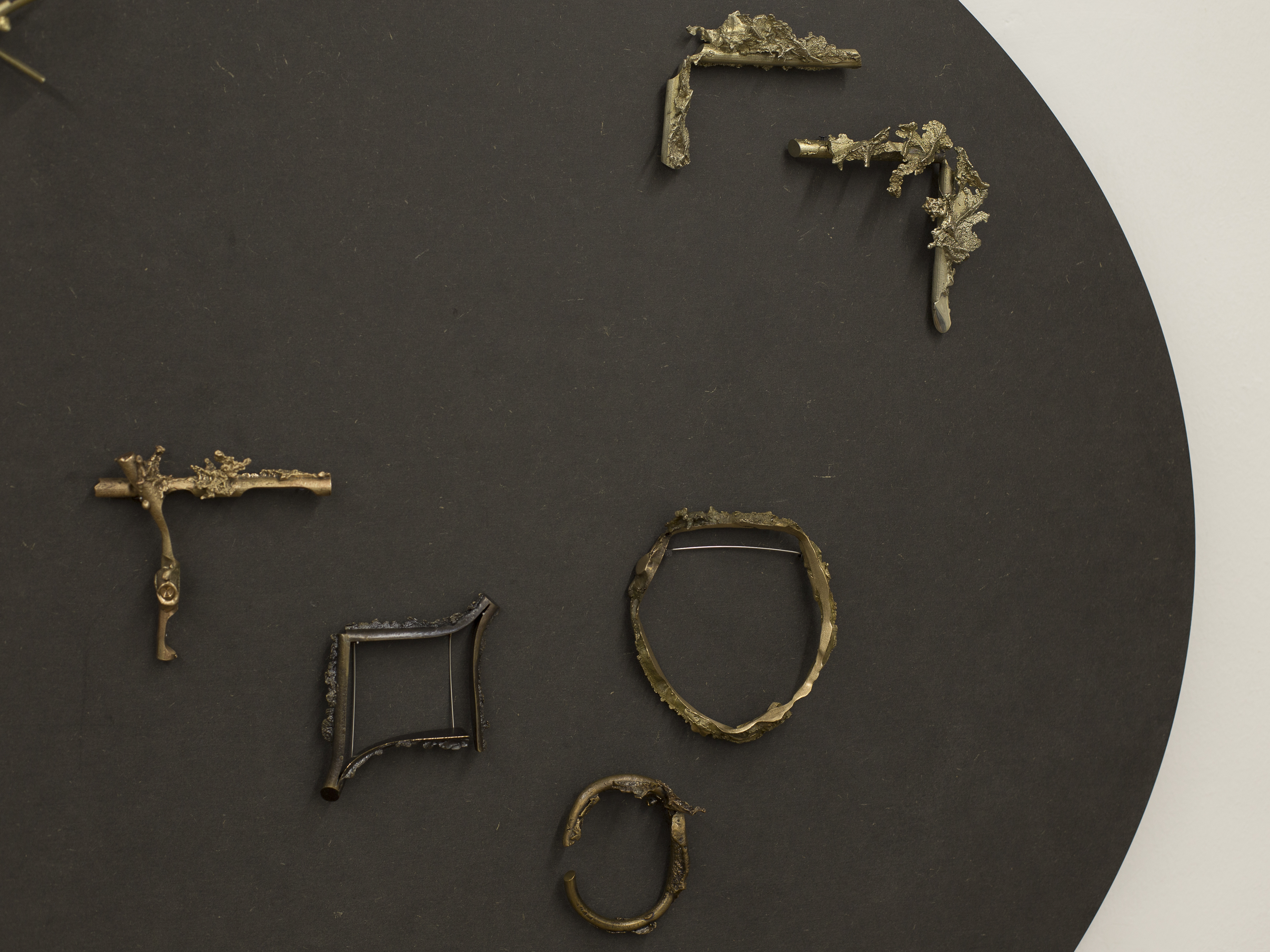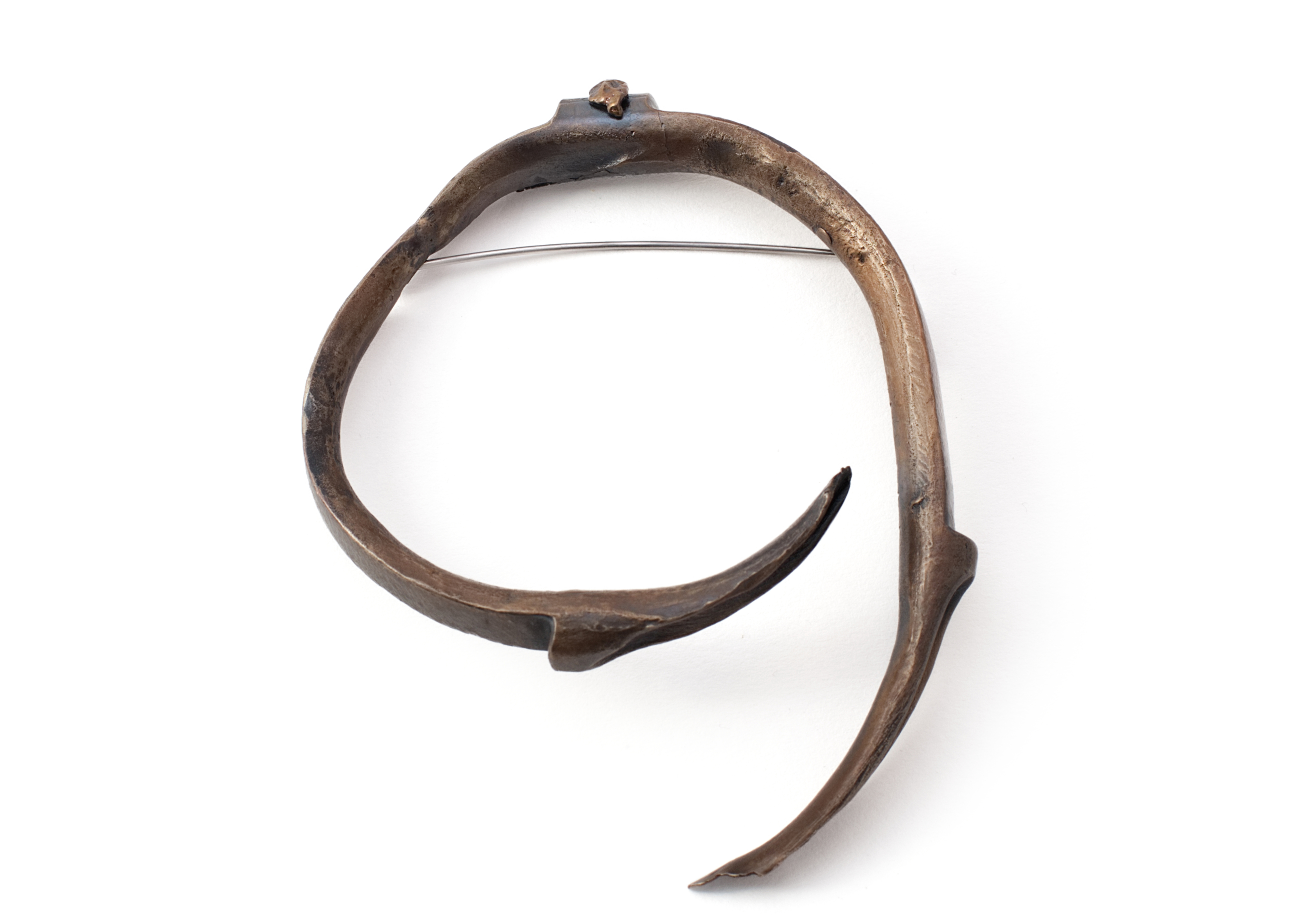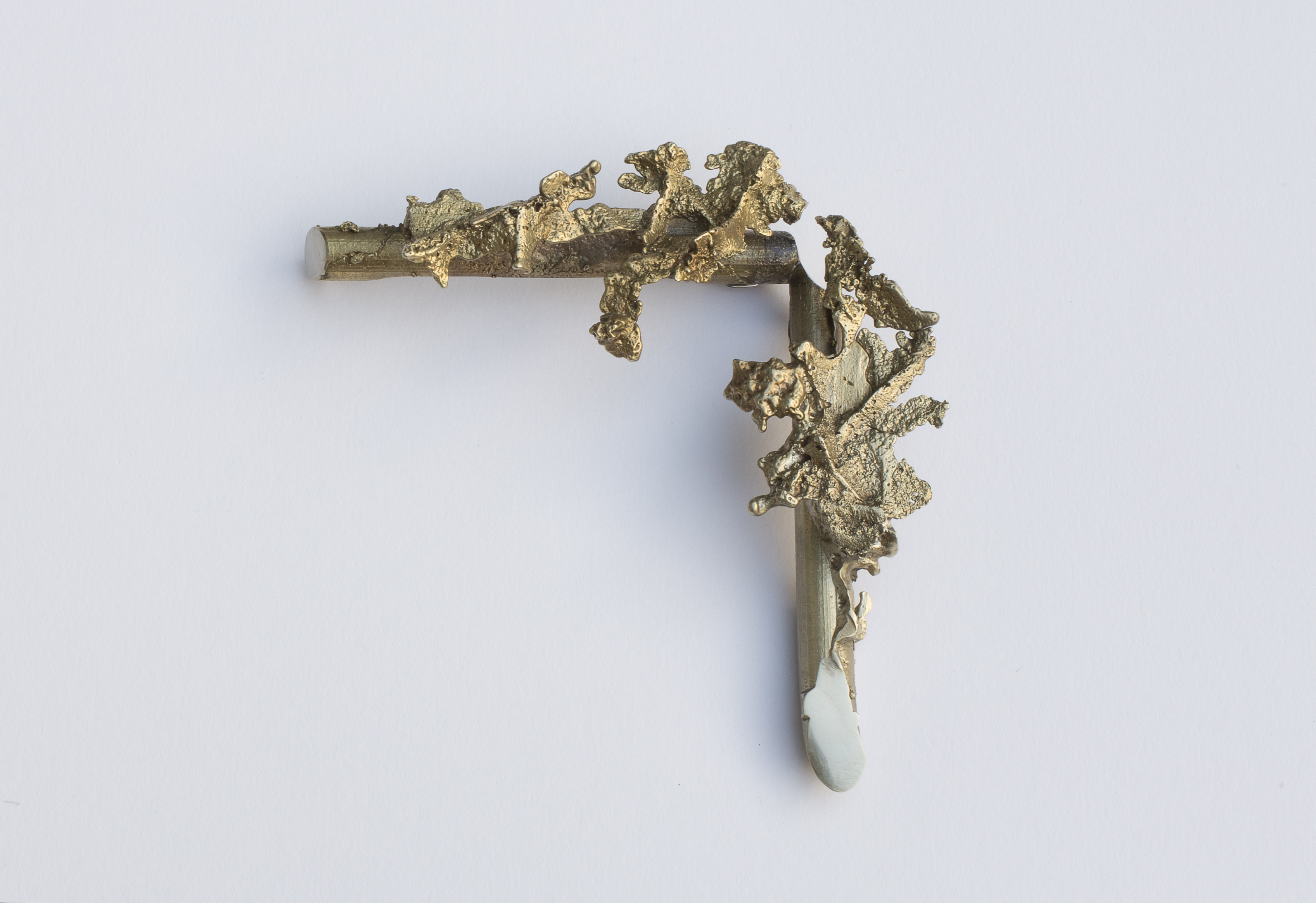
Parerga
2017-2019
brooches
re-purposed casting sprues in
bronze and nickel silver, stainless steel
>> In my jewellery series “Parerga”, I re-purposed casting sprues of sculptures into wearable pieces for the body. As the title implies, the project comments on the discipline devision between the fine and the applied arts as also the hierarchies imposed on them.
Parergo derives from the Greek language and refers to the element that stands next (par) to the main work (-ergo).
The word can describe a subordinate activity in addition to the original vocation, but it can also depict an accessory supplementing a larger and greater work.
In art history often the embellishment next to the central subject of an art piece has been called a parergo. The term has been coined by Kant in “Critique of Practical Reason” to discuss the ornamentation (Zieraten) around the main work, using as an example the gold gilded frame that surrounds the prime artwork, the painting. >>

In parallel to my main art jewellery practice I freelanced at a sculpture foundry in Berlin, casting large scale artworks in bronze, nickel silver and aluminum for the international art market. Involved in the production of Fine Art works for the worldwide art arena I observed how the art industry structures are build and I reflected on the separation among the art and craft practices.
The craft of casting large artworks employs a complex sprue system through which the liquid metal is channelled into the mould of the sculpture’s main body. The irregular structures grown on the surface of the sprues are random errors, generated during this casting process. These sprues are the last supporting elements to be detached from the final art pieces. I repurposed them further into wearable art pieces for the body by forging them into shapes that resemble gilded frames, linking them back the idea of a “parergo”.
Derrida deconstructed the term further in “The Truth in Painting”, where he investigated the relationship between the work of art, its frame, and its milieu in the visual arts. He interpreted the frame literally, as the physical boundary between the painting and its surroundings, but also metaphorically, drawing attention to the work’s cultural context. >>

The parergo puts the work in perspective, it is an action of reflective thought through isolation.Its function is to contextualise what is being framed, to make meaning. A frame is simultaneously the limit to a beginning and to an end, it protects its content and exposes it at the same time.
Craft is embedded within art creation, it is its core component.
Recent craft theory has engaged with the idea of the parergo due to its decorative function. But if it is the frame that puts the work in context and supports its meaning, then as Derrida argues, a painting needs its frame as much as a frame needs its painting.
The sprues are transformed into wearable art pieces for the body by forging them into frames of an empty content.
And what a frame is to a work of art, this is what jewellery becomes for the body. It signifies context.
2017 / Vivi Touloumidi


installation view, Maurer Zilioli Contemporary Arts gallery,
in room 2, MJW, Munich, DE, 2019
in room 2, MJW, Munich, DE, 2019

public collections:
• The Marzee Collection, NL, 2019
• Schmuckmuseum Pforzheim, DE, 2018
selected publications:
• SCHMUCKISMUS, Die Neue Sammlung,
Pinakothek der Moderne, catalogue, Munich, DE, 2019
• KORU 6, International Contemporary Jewellery,
catalogue, Imatra, FI, 2018
sponsored by Skulpturengießerei Knaak, Berlin, DE
• The Marzee Collection, NL, 2019
• Schmuckmuseum Pforzheim, DE, 2018
selected publications:
• SCHMUCKISMUS, Die Neue Sammlung,
Pinakothek der Moderne, catalogue, Munich, DE, 2019
• KORU 6, International Contemporary Jewellery,
catalogue, Imatra, FI, 2018
sponsored by Skulpturengießerei Knaak, Berlin, DE











